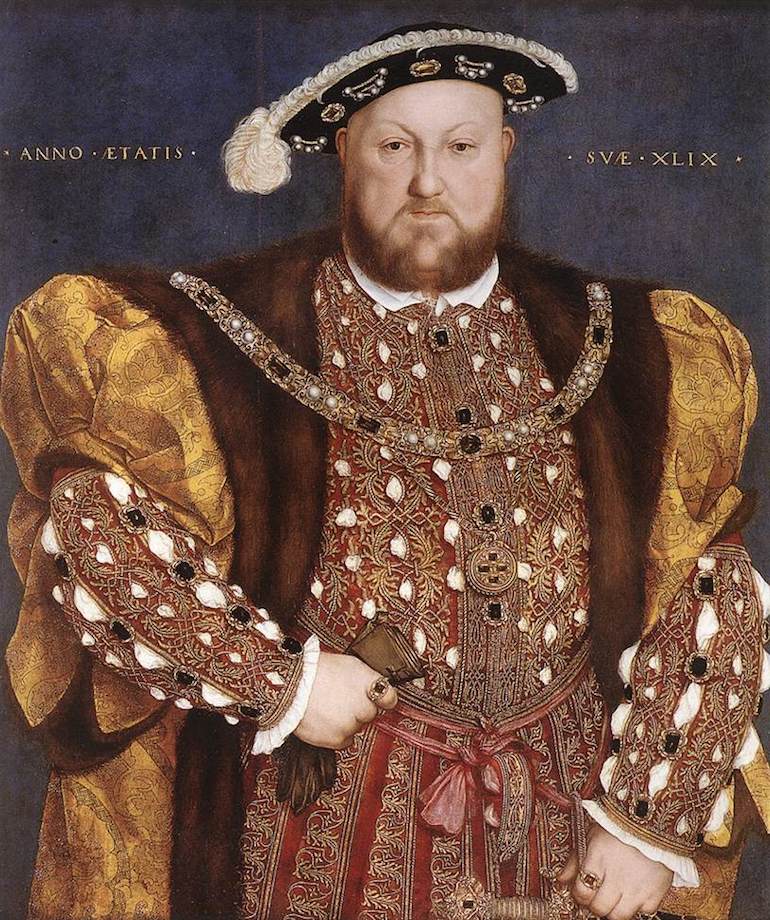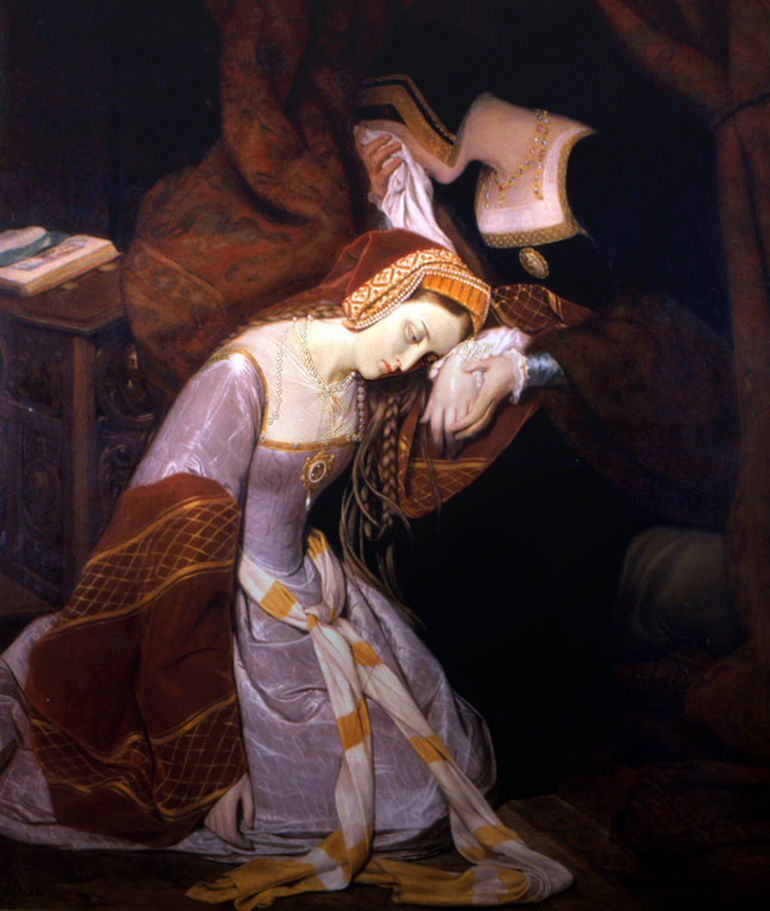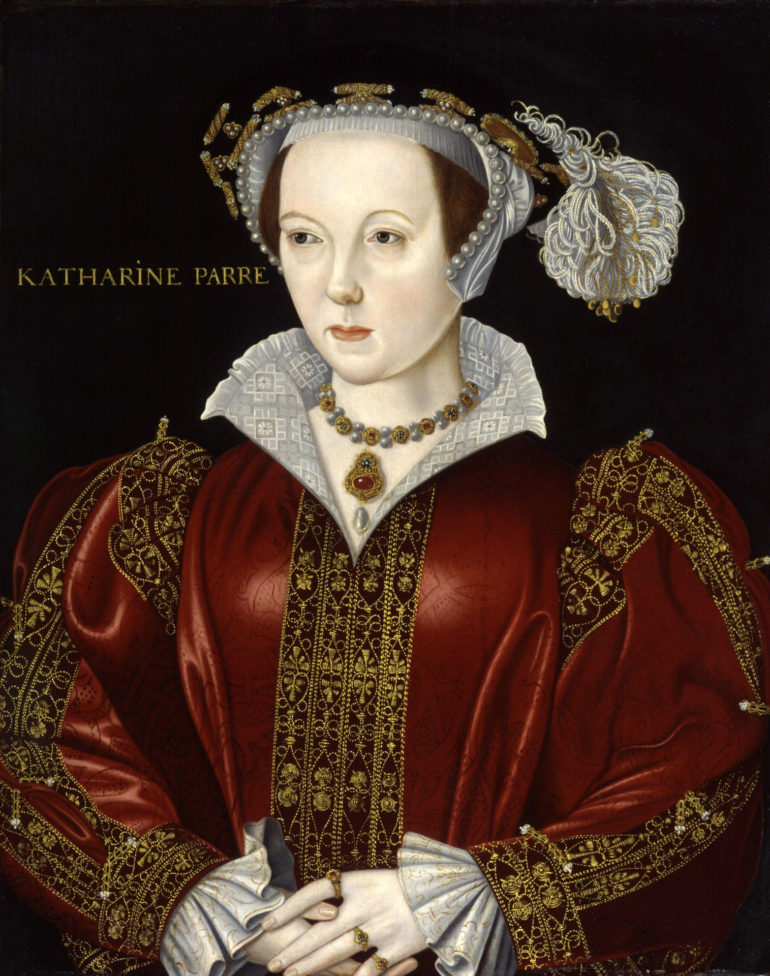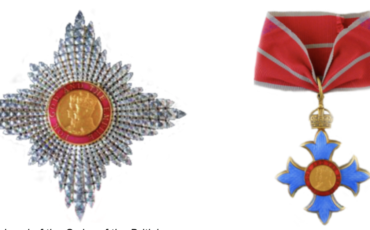Despite his long reign, King Henry VIII is remembered mainly for two things: for marrying six wives and for setting in motion a chain of events that would lead to England’s break from the Catholic Church and the start of the English Reformation.
But what led to these momentous events?
The answer lies partly in the past: his father, Henry VII, didn’t inherit the Crown; he brazenly took it by force on the battlefield. The Tudors were nothing more than upstarts, and King Henry VIII was acutely aware that their hold on the throne was fragile.
He was desperate for sons to carry on the Tudor name. No woman had ever ruled England in her own right, and he knew a daughter’s accession would be immediately challenged. This drove him to acts of shocking cruelty, particularly towards his six wives, who often paid a high price for being married to the King.
 Portrait of King Henry VIII by Hans Holbein the Younger circa 1540. Photo Credit: © Public Domain via Wikimedia Commons.
Portrait of King Henry VIII by Hans Holbein the Younger circa 1540. Photo Credit: © Public Domain via Wikimedia Commons.
King Henry VIII Spouses
We have a rhyme to remember the fate of each of King Henry VIII’s six wives:
Divorced, Beheaded, Died
Divorced, Beheaded, Survived
At the start of his reign, there was no indication of the turmoil to come.
Henry’s first wife, Katherine of Aragon, was the daughter of the Spanish rulers Ferdinand and Isabella. The young widow of his older brother Arthur, the 23-year-old Katherine, married Henry in June 1509. He was just days away from his 18th birthday and had been King for less than nine weeks.
It was to be seven years before she gave birth to a healthy daughter, Princess Mary.
When after 16 years of marriage, there were still no sons, Henry was convinced he was being punished by God for having married his brother’s widow. Desperate to end the marriage, he sought the Pope’s consent, but when the Pope refused an annulment, he took England out of the Catholic Church and set up the Church of England fashioned from the new Protestant faith.
Getting rid of Katharine suited Henry: for years, he’d been infatuated with the charismatic Anne Boleyn, one of Katharine’s ladies-in-waiting. He pursued her relentlessly, lavishing her with expensive gifts, but it was only when he promised marriage that she was finally persuaded into his bed. When Anne fell pregnant, they hurriedly married in secret.
The exiled Katharine soon learned that her marriage was to be declared illegal and that Anne was to take her place as Queen. She died just 3 years later.
Henry’s hope of a son with Anne was short-lived. To his bitter disappointment, that September, she gave birth to a daughter, Princess Elizabeth. The King had been so confident it would be a boy that the word ‘Prince’ on the official announcement had to be hastily amended to ‘Princess’.
Worse was to follow: Henry’s split from the Catholic Church had led to deep divisions, and by early 1535 the country was splintered. Senior members of his court, including the Lord Chancellor Sir Thomas More, refused to recognise him as Head of the Church and were found guilty of treason and executed, their heads rammed on spikes on London Bridge. Many more were imprisoned or executed, and you can still see the messages they left us etched into the walls of the Tower of London.
Anne meanwhile fell pregnant twice more, but both were stillborn. It was the beginning of the end.
On the morning of 2 May 1536, she was at Greenwich Palace watching a game of tennis when she was arrested and taken to the Tower of London. The Queen Henry had turned England on its head to win had failed to deliver, and he was now tired of her. Accused of witchcraft, adultery, and incest, she was executed just 17 days later.
 . Portrait of King Henry VIII’s 2nd wife Anne Boleyn at Tower of London by Edouard Cibot. Photo Credit: © Public Domain via Wikimedia Commons.
. Portrait of King Henry VIII’s 2nd wife Anne Boleyn at Tower of London by Edouard Cibot. Photo Credit: © Public Domain via Wikimedia Commons.
Within 11 days of Anne’s death, Henry married Jane Seymour, and by early June, she was declared Queen. Rumours of a pregnancy began almost immediately, but it wasn’t until October of the following year that she finally gave birth at Hampton Court Palace. To Henry’s delight, it was a son – after nearly 30 years on the throne, he finally had a legitimate male heir.
But his joy was soon to be overshadowed by tragedy.
Within days of Edward’s christening, the Chapel Royal at Hampton Court was being draped with black cloth so that the body of Jane Seymour could be laid there following her death. Less than two weeks after giving birth, she had yielded to postnatal complications.
She was the only one of Henry’s wives to receive a Queen’s funeral. At St George’s Chapel, Windsor, 29 mourners followed her coffin – one for every year of her life.
Heartbroken by her loss, he mourned for nearly two years. But the young Edward was not a strong child, and Henry’s advisers encouraged him to reach an alliance with Germany, the leading Protestant nation in Europe.
Henry agreed and, having seen her portrait, gave his word that he would marry Anne of Cleves, a daughter of the powerful Duke of Cleves. In the winter of 1539, the 24-year-old arrived in England, but when Henry set eyes on her, he was appalled. He insisted his ministers get him out of the marriage, but unable to do so, the marriage went ahead in January 1540. However, it was never consummated, and Anne of Cleves was never crowned Queen. Wisely, she gave her consent to an annulment and received a generous settlement from the King.
Of all the wives, she fared the best, outliving the rest and surviving to see the coronation of Queen Mary I. She is the only one to be buried in Westminster Abbey.
Anne’s diplomatic sidestep left the way open for a young flirtatious girl who had caught Henry’s eye, and this time he didn’t hesitate. Just three weeks after ending his marriage to Anne of Cleves, Henry married Catherine Howard. Her short life is one of the most tragic stories of Henry’s reign.
Catherine was just 19 when she became his fifth wife. By this time, he was in his late forties, massively overweight, and a deeply unpleasant man.
In the spring of 1541, the King fell seriously ill with a fever, and Catherine was sent away from court. Taking a huge risk, she started a relationship with one of Henry’s closest friends.
After just 17 months of marriage, her secret was discovered, and she was arrested for adultery.
On a cold February day in 1542, she was taken by barge along the River Thames to be executed at the Tower of London. Her reign as Queen was brief – less than 18 months.
After the failure of his fifth marriage, Henry married for the sixth and final time in 1543. This time he was determined not to be humiliated and chose Katherine Parr, 31 years old and twice widowed. She was a good fit for Henry – she nursed him, got on well with his children and was interested in the theological debates of the court, though her reformist ideas came perilously close to getting her accused of heresy. However, she survived the accusations and ultimately survived the King.
 Portrait of King Henry VIII’s 6th wife Katherine Parr. Photo Credit: © Public Domain via Wikimedia Commons.
Portrait of King Henry VIII’s 6th wife Katherine Parr. Photo Credit: © Public Domain via Wikimedia Commons.
In the winter of 1546, Henry’s health began to fail, and he died at Whitehall Palace in the early hours of 28 January 1547. He chose to be buried alongside Jane Seymour at Windsor Castle.
After Henry’s death, Katherine married Thomas Seymour but died in childbirth the following year.
The story of Henry VIII and his six wives is one of the most dramatic in our history. Much of it played out in London, where you can still trace their lives. At the Tower of London, you can experience where Anne Boleyn and Catherine Howard spent their final hours, at Westminster Abbey, you’ll find the grave of Anne of Cleves; and at Hampton Court, you can see where Jane Seymour lost her life and where Henry married Katherine Parr. A tour with a Blue Badge Tourist Guide will bring these places and stories to life.
It’s ironic that whilst Henry moved heaven and earth to get a son, it was his youngest daughter Elizabeth who, as Queen Elizabeth I, went on to be one of the greatest monarchs this country has ever known. When she died, Henry’s hopes of a long Tudor dynasty died with her.







I am bringing my grandsons to London in March and would love to have a guided tour of the highlights of the British museum tailored to a 16 and 9 year old.